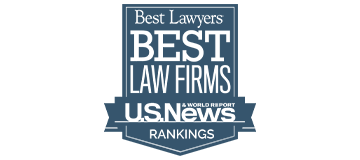As Ohio civil litigation attorneys, understanding and connecting with juries is critical to securing the justice our clients deserve. In a previous post, we discussed how juror biases such as loss aversion and a preference for the status quo impact how we communicate with jurors. In this post, we delve into another type of bias: proximity.
Juror biases versus personal opinions
In this instance, when we refer to “juror biases,” we’re not talking about the broad opinions and beliefs held by each member of a jury as a result of their own personal experiences. We address those during voir dire, a very important part of the jury-selection process.
Instead, we’re referring to the more general types of biases that are really just a consequence of how we as humans are wired to think. They tend to be subtler, based as much in human psychology as through our experiences.
For a free legal consultation, call (614) 481-6000
The power of proximity
One tendency we’ve noticed is that all of us, jurors included, tend to feel more motivated to act when we’re faced with a personal impact than when we are faced with a more general or nebulous impact. Call it the power of proximity.
This is not a novel observation. Peter Singer, in his 1997 essay on ethics, “The Drowning Child and the Expanding Circle,” discusses a thought experiment that demonstrates the power of proximity in action. In the experiment, he proposes a scenario to his students: If they were walking on their way to school and noticed a child who seemed to be drowning in a nearby pond, would they help the child, even though this would ruin their clothes and make them late to class? Unanimously, the students said they would help the child.
But when Singer then proposed a different scenario—the child was far away in a different country, in imminent danger of dying, and could be saved if the students gave a small amount of money (essentially equivalent to the price of the clothes they would have ruined from jumping in the pond in the first scenario)—there was a different response. Students began raising practical difficulties rather than instantly agreeing that they were ethically bound to help, as in the drowning-child scenario.
The reason why people reacted differently in the second scenario is that it wasn’t personalized. The child halfway around the world doesn’t have a personal impact on us; we assume there are others who can likely take care of the situation. A child right in front of us, on the other hand, is real—we can see a face and thus feel personally responsible.
In court, we try to take the proximity bias to its logical conclusion. We recognize that by putting a human face on a situation—a client’s face—it brings a case from the abstract to the particular, to something that has been personalized for jurors. and that’s when they’re more likely to want to help our client.
Staying objective with golden rule arguments
Because of this powerful tendency to identify with a person right in front of us, some courts, including those in Ohio, prohibit “golden rule arguments”—arguments that ask the jury to put themselves in our clients’ shoes. As Ohio civil litigation attorneys, we can’t, for example, face a jury and openly say, “Ladies and gentlemen of the jury, if you had been through what our client experienced, what verdict would you hope for in this situation?” The idea behind this restriction is that jurors are supposed to consider the facts of a case in an objective manner, not approach them from an emotional point of view.
Nonetheless, this juror bias still exists—jurors are people, after all, and they can still empathize with people even without a golden rule argument. As a result, if a jury is asked to compensate a particular person or family for the loss of a loved one (or to compensate someone who’s suffered disabling harm), it’s important to personalize that request as much as possible. That means ensuring jurors not only know the facts of our client’s case, but that they also know our client—as a fellow human being, as somebody they can relate to.
Many lawyers will try to essentially do the opposite and instead talk about the broad societal impact of a case—which is important, to be sure—but their arguments should never be at the expense of focusing on the very real person who is right in front of the jury.
Click to contact our personal injury lawyers today
Great communicators
Obtaining justice for our clients requires more than just a knowledge of the law—it takes the ability to communicate, to relate to people in the most fundamental way possible.
As talented communicators, our attorneys are able to connect with juries, diminishing distance and restoring proximity so that jury members understand their decisions will have a direct impact on their communities and the lives of our clients.
The outcome of any client’s case will depend on the particular legal and factual circumstances of the case.
Call or text (614) 481-6000 or complete a Free Case Evaluation form
















































